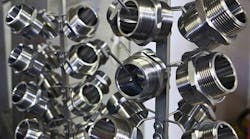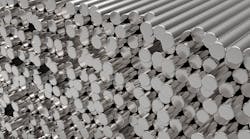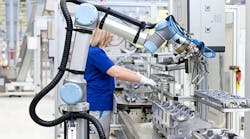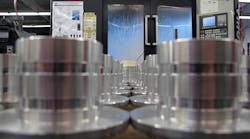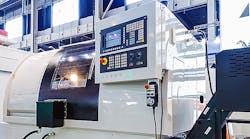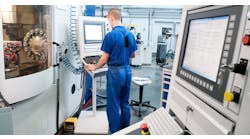Metal plating adds quality and value to finished parts, and provides multiple other benefits to the parts’ buyers. The seemingly simple technique of plating a substrate metal or material with a coat of a different metal can improve corrosion resistance, add decorative appeal, enhance solderability, add mechanical strength, reduce friction, enhance or reduce conductivity, and improve magnetism and paint adhesion.
Metal plating involves applying a thin layer of nickel, copper, chromium or other metal to coat its substrate and was originally developed in 1805 by an Italian chemist, Luigi Brugnatelli. However, having successfully electroplated silver metals with a gold coating, Brugnatelli’s innovation was hidden for 35 years later, when Russian and English scientists discovered electroplating apparently for the first time. The first patent was awarded in 1940.
Since then, metal plating has revolutionized parts manufacturing as well as how we live our lives. Thanks to this innovation, end-users in both factories and kitchens have longer-lasting equipment and utensils, due to the corrosion-resistant advantages of metal plating.
Traditional metal plating was done through electroplating, which requires an electric current. More recently, we have seen the introduction of electroless plating, which takes place through an autocatalytic chemical process. But how do they both work — and which one is better, if either?
How does traditional plating work? — Electroplating relies on an electric current that reduces metal ions in order for them to form a metal coating on an electrode. The electric current is then applied to a component, to which it transfers the metallic composition and applies it onto a metal substrate or parent material.
A thin layer of this metal now covers the substrate. However, multiple applications may be necessary to achieve a desired thickness of metal plating, for example, for corrosion resistance or wear prevention purposes. What we see most often in the process of electroplating is a chemical solution that contains the ionic version of the metal, an anode with a positive charge, and a cathode with a negative charge. The cathode supplies the electrons to create the thin coat of non-ionic metal.
How about electroless plating? — Electroless plating is also referred to as chemical or autocatalytic plating, and is based on a non-galvanic plating technique. Electroless plating consists of various simultaneous reactions in a watery solution. However, it differs most obviously from electroplating in that electroless occurs without the application of external electrical power. So how does it happen?
The reaction occurs when hydrogen is released by sodium hypophosphite, or another reducing chemical, and is then oxidized to produce a negatively charged part. The component is treated to remove any corrosion-forming elements and then activated, which means it is etched in acid or some other preparatory solution. The component then receives anti-oxidation chemicals, leaving it with enhanced resistance to corrosion and friction.
Which Is better? — Electroplating is a complex process. Executing it properly requires intricate filtration equipment and potentially harmful battery applications. And yet, electroless plating requires no extra equipment and the chemicals can be replaced automatically. In electroless plating, engineers have far greater control over the deposition process, which means a smoother and more consistent application of the coating. Moreover, with this process, it is also possible to alter the thickness and volume of metallic plating to specific and accurate standards.
At first glance, electroplating and electroless plating may appear very similar, but the critical difference is seen in the name — electro-“less.” Electroless plating refers to an immersion reaction which does not require a power source — an electric current — to achieve a coating onto another metal. Instead, electroless is accomplished by a chemical catalyst, which is already available in the aqueous solution, and which then automatically creates the plating.
Given safety concerns and the increasingly specific demands of accuracy and compliance with standards, electroless plating is growing in popularity because it is less dangerous to supervise and carry out, and ultimately more controllable in terms of coating consistency and thickness.
Megan Nichols is an amateur astronomer and environmentalist, and a writer on a wide range of scientific topics. Her recent contributions to AmericanMachinist.com have examined the comparative value of different aluminum grades and the emerging standards for on-demand manufacturing. She has offered insights on managing workers and robots, improving machine shop efficiency, Smart manufacturing, and other emerging issues in manufacturing technology. Follow Megan on Twitter @nicholsrmegan.
